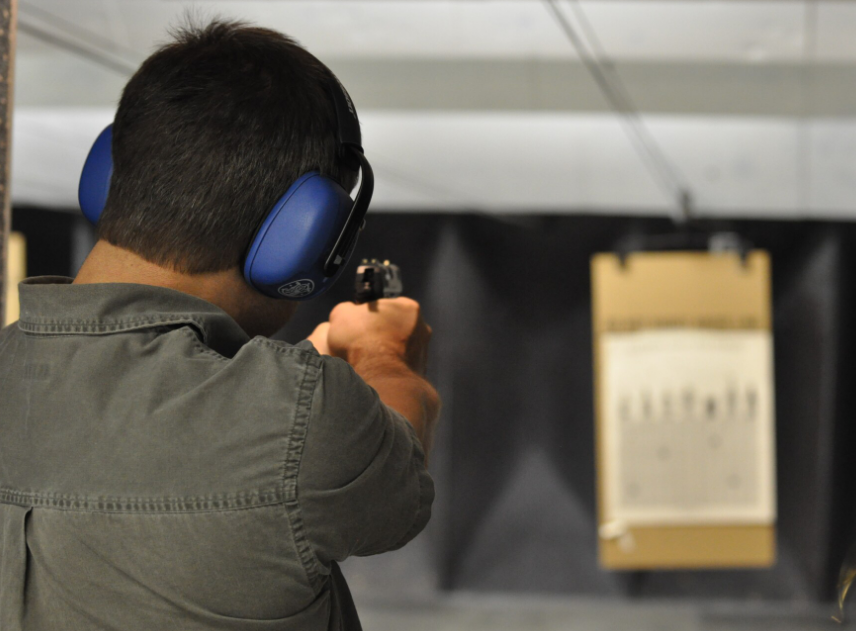How to
6 Things to Look For Before Buying Handgun Sights

Did you know that the first “official” rifle sight was invented between 1835 and 1840? Of course, its primitive predecessors, the iron sights, and others have been on the field for as long as guns were around.
Needless to say, when it comes to handgun sights, you’ll find many options to choose from. Yet, that doesn’t mean that all of them would be perfect for your needs.
But, if you’re looking for the best handgun sights and how to pick the right one for you, no worries. You’ve come to the right place. Keep on reading for our full breakdown of the top six kinds of sights on the market and the factors you’ll need to determine which is perfect for you.
Understanding Handgun Reflex Sight
Let’s start with some foundational knowledge about handgun sights and work our way from there.
After demonstrating their efficacy in the shooting competitions for many years, red dot sights on handguns, also known as micro red dot sights (MDRS). They’re rather popular for defensive usage at the moment.
On handguns, they’re nearly as big of a game-changer as they were on long guns.
You may maintain your concentration on your target and place the red dot where you want your bullet to travel on most targets, and the bullet will follow the red dot (instead of lining up the front and rear sight and having to shift your focus to the front sight).
They eliminate many of the aiming benefits of a longer slide, making shooting simpler for shooters with visual disorientation (seeing ghost images while aiming with both eyes open). They are sometimes easier to follow in recoil than iron sights.
Red dots make a big difference when it comes to precision (rather than speed). It’s straightforward to fire tight groups with a red dot and shoot correctly at far greater distances as long as you can squeeze the trigger without upsetting the barrel.
How to Select the Right Handgun Sights
Start by identifying the primary function of your firearm.
Is it a fun range/plinking gun to take on family excursions and gorgeous days? Is it a personal/home defense weapon that you’ll keep in your nightstand drawer? Is this a competition firearm? Is it going to be the gun you carry every day, or does your profession, such as Law Enforcement Officer or Security Guard, need you to have a duty gun? Is it all of the above, or none of the above?
When it comes to sight selection, the fun range/plinking rifles offer the most options. It’s almost always a sunny day if you’re at an outdoor range. This application will function well with any sight that uses fiber-optic technology. Indoor ranges, on the other hand, may be difficult to use depending on the illumination available.
You want a sight that will help you create an accurate sight picture for those things that go bump in the night for personal/home defense weapons.
There are six main types of handgun sights that you can choose from. Let’s explore them one at a time.
1. Fiber-Optic Sights
This is most likely our oldest kind of vision technology. Any available light from a natural or artificial source may brighten the fiber, making it more visible and simpler to notice. The more apparent the sights are, the brighter the ambient lighting is.
Fiber-optic sights offer the brightest aiming points even in low-light situations as long as there is a light source (the sun at an outdoor range or overhead lighting at an indoor range). The TRIDOT aiming system, which uses a red fiber-optic front and a green fiber-optic rear to generate contrast between the front and back sights, benefits this sight set (apart from the fiber-optics). This enables simpler, faster, and more accurate target acquisition by distinguishing between the front and rear sights.
It is cost-effective to enhance accuracy and performance by switching from a conventional iron sight to a brilliant fiber-optic sight. Whether you’re shooting steel at an outdoor range, hitting the bullseye at a local indoor range, or increasing your EDC’s sight vision, there’s something for everyone (every-day-carry).
Fiber-optic sights are an excellent all-around sight for any application since they improve sight visibility and assist the bullet in reaching its target.
2. Fiber-Optic Pro Sights
The Fiber-Optic Pro sight series was launched in 2019, building on the benefits of fiber-optic sights and providing a quick and accurate sight image for competitive and leisure shooters. The front sight is what distinguishes this sight.
A unique light reflector focuses on the fiber’s available light for a brighter glow than conventional fiber-optic sights. This technique also allows for a brighter front sight without lengthening it (which would effectively reduce the sight radius). It enables greater contrast and attention to stay on the front sight when combined with a blacked-out back sight.
You could hardly imagine a better sight for competitive shooters. On a bright day at the range, any fiber-optic sight will suffice. Still, the Fiber-Optic Pro surpasses conventional fiber-optic sights and delivers excellent performance outside and inside.
Indoor matches offer a problem for any competitive shooter, with a fiber-optic insert working less than optimally owing to poor illumination beyond the individual shooting bays.
Any available light is redirected because of the light reflector, improving sight vision and quicker target acquisition. This sight is compatible with many manufacturers (Glock, Springfield, Smith & Wesson, CZ) and competition-specific models such as the Sig Sauer X5/X5 Legion, Walther Q5 Match/SF, and CZ Shadow.
3. Tritium Sights
What happens if the power goes out? Even if you can tell friends from an adversary, there is probably not enough light to view your sights well. It’s not necessary to keep your sidearm hidden.
The TRUGLO TRITIUM night sights transform from conventional white dot sights to luminous green dots in the dark. Tritium does not need batteries and does not require light to charge; it just glows.
Tritium sights are compelling once placed on a rifle, but it’s better to leave the installation to a gunsmith using a sight press tool to ensure that the tritium vials are not damaged.
You can always go with Wing Tactical if you’re looking for a high-quality supplier.
4. Tritium Pro Sights
The Tritium Pro sight set is the next stage in the tritium sight series. Add a couple of additional features to what you already know from our TRITIUM sight set. A FOCUSLOCK ring for enhanced front sight contrast, a U-notched rear sight design for quicker target acquisitions, and an angled rear sight edge for emergency one-handed operation are all included in this series.
This sight set has the same impact as the Fiber-Optic Pro sight set, except instead of fiber-optic material, it utilizes tritium. The tritium inlays on the rear sight are an additional bonus. When used in sunlight or ambient illumination, the rear sight has a “blacked-out” look due to the absence of a white ring surrounding the tritium inserts.
5. Tritium and Fiber-Optic (TFO®)
When the visibility of fiber-optic material is combined with the brightness of tritium inlays, what do you get? It’s like having the best of both worlds. The TFO sight combination combines our fiber-optic sights with the tritium night sights to provide a brilliant sight image at all times of day and night.
When ambient light is available, the fiber-optic material provides unparalleled vision. At the same time, the tritium inserts are kept beneath the fiber-optic material for when the sun is down, and the lights are turned off.
The tritium serves as a light source, lighting the fiber and making it visible 24 hours a day, seven days a week. This technique not only enhanced but also revolutionized pistol sight technology. They soon became the most sought-after sights for personal/home protection, duty, EDC, and range pistols following their original introduction in 2001.
6. The TFX Pro
Last but not least, there’s the TFX Pro sight set. It’s based on the same technology as the TFX sights we just discussed, with three key changes exclusive to our PRO level sights.
The first is a rear sight with a U-notch for improved speed and accuracy. The second feature is the sloped rear sight edge, which allows for one-handed use in an emergency. The third is the orange FOCUSLOCK ring, which is similar to the TFX sight set in that it offers a connection between the front and rear sights, but the orange is a deeper and richer hue that our eyes take up more easily.
Stated, the TFX Pro sight system is the finest we have to offer for duty, personal/home protection, EDC, range/plinking, and a variety of other applications.
Laser Sights for Handguns: Unlocked
If you’re new to the world of gun accessories and tools, things can be rather overwhelming at first. But, we hope that our guide has shed some light on the different six handgun sights options you have and help with your selection process.
Yet, if you’re still feeling shaky on the details, don’t worry about it. You can check out our hunting and guns sections for all the additional tips and strategies you could need.




![[pii_email_4c910535350b5a41ee81] Error Code Resolved](https://wigily.com/wp-content/uploads/2020/09/pii_email_4c910535350b5a41ee81-Error-Code-Resolved.jpg)
